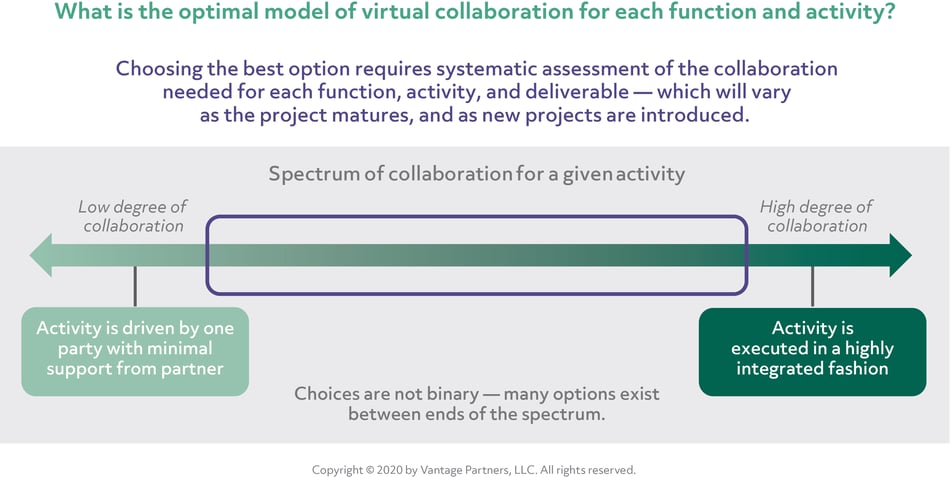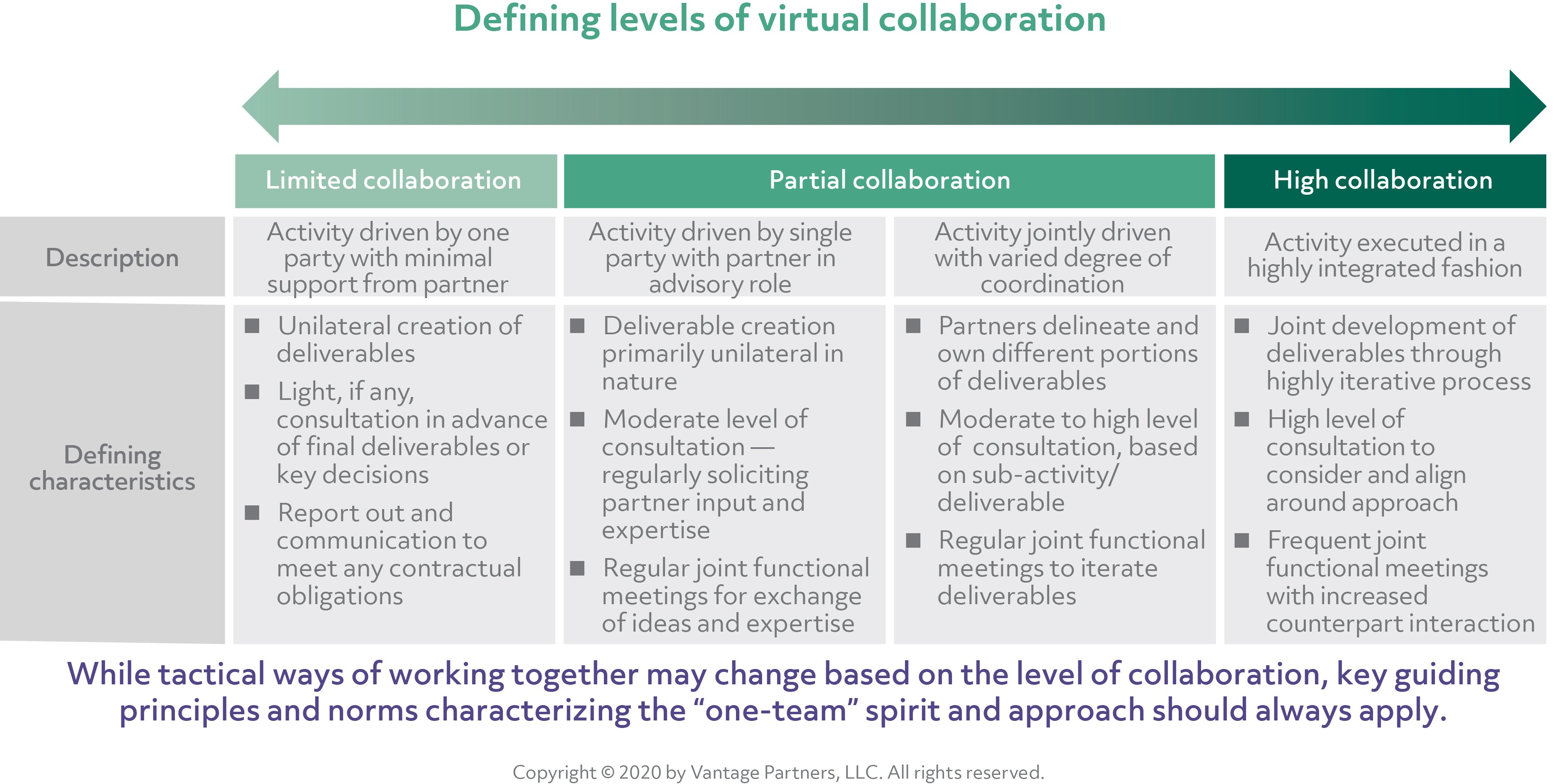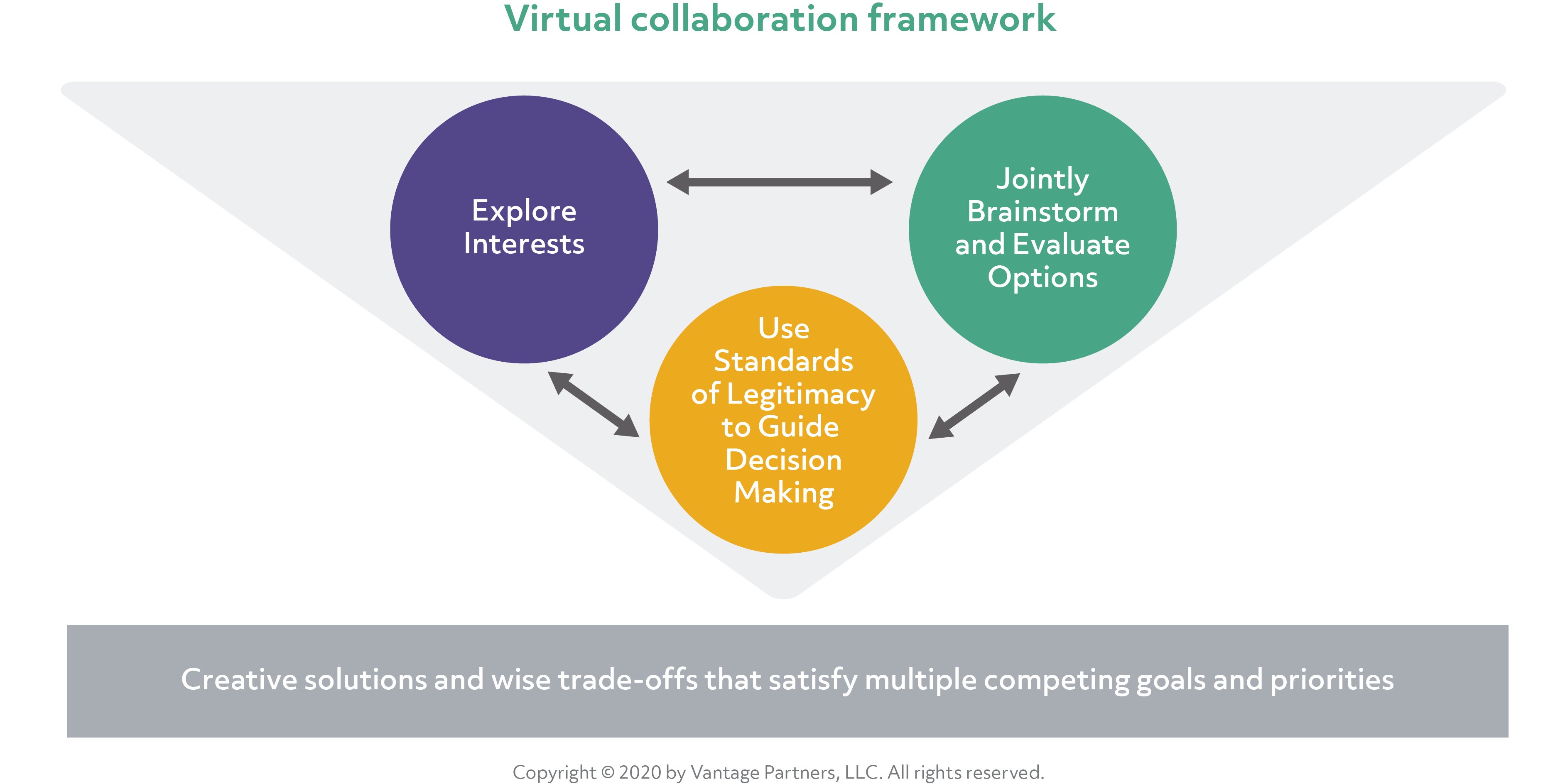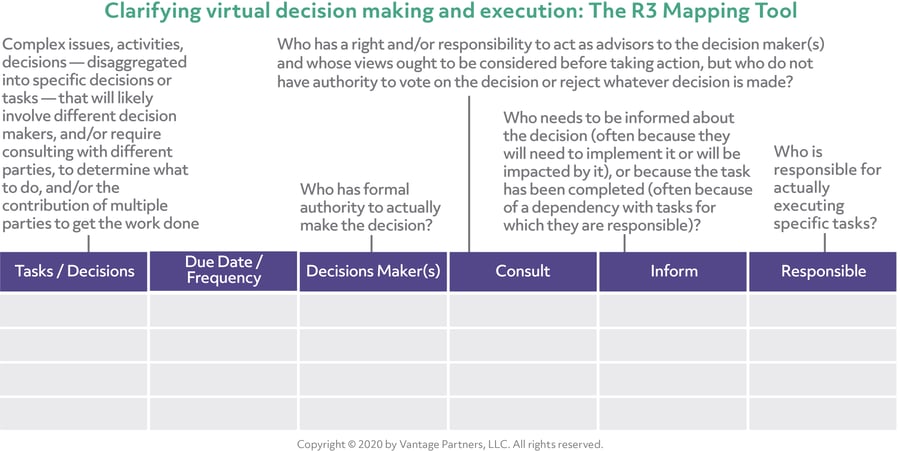
Note: This broadcast is available on-demand in our Insights Center.
These days, there are no chance interactions by the coffee pot. There are no informal meetings after the formal meeting. How then do we manage our priorities and drive our projects in a virtual environment?
My colleague Gabriella Salvatore, head of design solutions and innovation at Vantage Partners, recently hosted a virtual learning session to explore these questions and offer insights on them—from both our firm’s market research and Gabriella’s diverse background as a learning and development executive, consultant, instructor, and thought leader.
Well before the world shifted a few months ago, organizations of all stripes were navigating the future of work and the collaboration challenges that came with it. Technological innovations, demographic changes in the workforce, and flatter, more complex operating models are just a few of the many shifts requiring us to work with each other in fundamentally new ways. This was especially true for those of us working in “the matrix”—the complex, interconnected stakeholder landscape that typifies most business organizations.
Current circumstances bolster these dynamics and dramatically accelerate the need to engage with our colleagues and business partners in more proactive, more impactful ways. If the future of work had already arrived, it has since become further reaching, more complicated, and more dependent upon healthy digital cultures than any of us had previously considered.
Following are a few steps from Gabriella’s virtual session to help you collaborate more effectively now that the whole team is at home and online.
1. Develop a virtual collaboration mindsetAs Gabriella noted, success in this new environment requires a shift—from the legacy approaches that we know well, to a virtual collaboration mindset. We adopt this attitude to prioritize outcomes, embrace ambiguity and difference, learn from failures, and in so doing, refrain from blame.
“We have to be open to conflicting opinions,” Gabriella explained, “And get curious about how people see things differently. We have to focus on the problem—not see our people as the problem—and take a ‘yes, and’ approach that keeps us united in common purpose."
In short, a virtual collaboration mindset is a self-commitment to collective growth. Our colleague Liz Rayer has expanded upon this mindset in the context of organizational leadership. We leverage it here as an instrument for all of us to involve the right people and execute the right tasks.
Critically, this does not mean everyone is involved with every decision, Gabriella reminded the group. On the contrary, this mindset is “a tool for considering and determining what level of collaboration is required to achieve our goals.”

Does the task at hand fall on the left side of the spectrum and require a low level of collaboration because the team has all the information it needs? Or is the task more of an integrated activity on the right end of the scale?
“The art here,” Gabriella advised, “Is to know where on this spectrum your task sits and then to speak explicitly with your team about the set of activities that are required for execution.”

2. Operate within a virtual collaboration framework
To get those activities done efficiently, seek creative solutions and make wise trade-offs that satisfy multiple competing goals and priorities. We can do that with a virtual collaboration framework, which is a series of non-linear, co-dependent steps.
“It's not a battle of wills,” Gabriella noted, “but rather an exploration and search for resolution. Then, by definition, we can come up with much more creative solutions.”
To put the framework into action:
- Explore interests. Before making any demands, slow down and think about the questions whose answers will tell you more about your counterparts’ underlying priorities. The sooner you grasp what drives them, the sooner you’ll arrive at a conclusion that they can endorse.
- Jointly brainstorm and evaluate options. Individually and collectively, avoid jumping on the first idea that gets pitched. Especially after exploring your counterparts’ interests, exhausting and weighing the options will ensure shared confidence in your approach.
- Use standards of legitimacy to guide decision making. Collaborating virtually means finding and using criteria to advance your shared thinking. Whether the outcomes were good or bad, your past decisions and your competitors’ decisions are often helpful reference points.

3. Clarify virtual decision making and execution processes
Once you have determined the creative solutions that will work most effectively, you will need to determine amongst your team how to execute your choices.
This involves five key steps.
- Break the complex down to the discrete. Disaggregate the “big picture” issues into specific pieces and tasks. Each component likely will involve different decision makers, Gabriella clarified, so make sure to define each activity and its associated people.
- Designate the decision maker. Establish who is in charge and has the formal authority to make the final decision. Gabriella noted that this is often the person who controls the budget and/or who leads a functional line. Regardless of their title, though, we want to identify the decision maker promptly and reinforce their status to all relevant parties.
- Designate the consultants. Determine who has the right or the responsibility to act as advisor(s) to the decision maker. Typically, Gabriella mentioned, these are subject matter experts “without whose perspectives we will land on a ‘less good’ decision.”
- Designate the informed parties. Consider who needs to be informed about the decision. Perhaps they have not been directly involved in the decision-making or consultation processes, Gabriella explored, but these are people who will notice and feel the impact of the choice point. Notify them as proactively as possible.
- Designate the responsible parties. Finally, reflect on the people who will be responsible for executing specific tasks. This may or may not be the decision maker, and as Gabriella chuckled knowingly, when (as often happens) those responsible are not also the decision makers, confusion can easily arise between roles. Do your best to clarify roles and avoid such confusion between who decides and who executes.

4. Communicate well to build a culture of collective accountability
Underlying each of these practices, at the heart of effective virtual work itself, is clear communication. When we misword an email or sound a little too short in a ping, there is no longer that fortuitous opportunity to clear up ambiguity with our colleagues in-person, when we’re all back in the office next – because no one knows when we’ll be in the office next.
“In this environment,” Gabriella reflected, “There's no water cooler talk. There is no ‘meeting after the meeting’ as you walk to your next meeting. We have to work harder and with more intentionality to combat the challenges that complicate virtual collaboration.”
As such, remember to keep your online communication:
- Clear by speaking to people in their language; avoid jargon, be direct, and eschew “spin”
- Concise by focusing on the important, maximizing a message’s impact, and avoiding distractions
- Contextualized by providing background information and broader context as needed so people fully understand explanations, advice, requests, and assignments
- Consistent by avoiding mixed messages and minimizing periods of non-communication
- Coordinated by getting the right information and messages, to the right people, at the right time, from the right messengers
- Constructive by planning and executing communication with deliberate intent to achieve positive results
In a time of seemingly unending urgency and constantly changing information, it can be daunting to think about driving your projects forward. How you and your organization respond to this crisis, though, could reverberate for months and years to come. With these tips in mind, remember your common purpose, build cultures of collective accountability, and thrive.
Ethan Underhill is a consultant at Vantage Partners. He has designed and delivered numerous programs on influence, negotiation, leadership, change management, and matrix management with leading clients across the professional services, manufacturing, and healthcare industries.
.png?width=512&height=130&name=vantage-logo(2).png)

